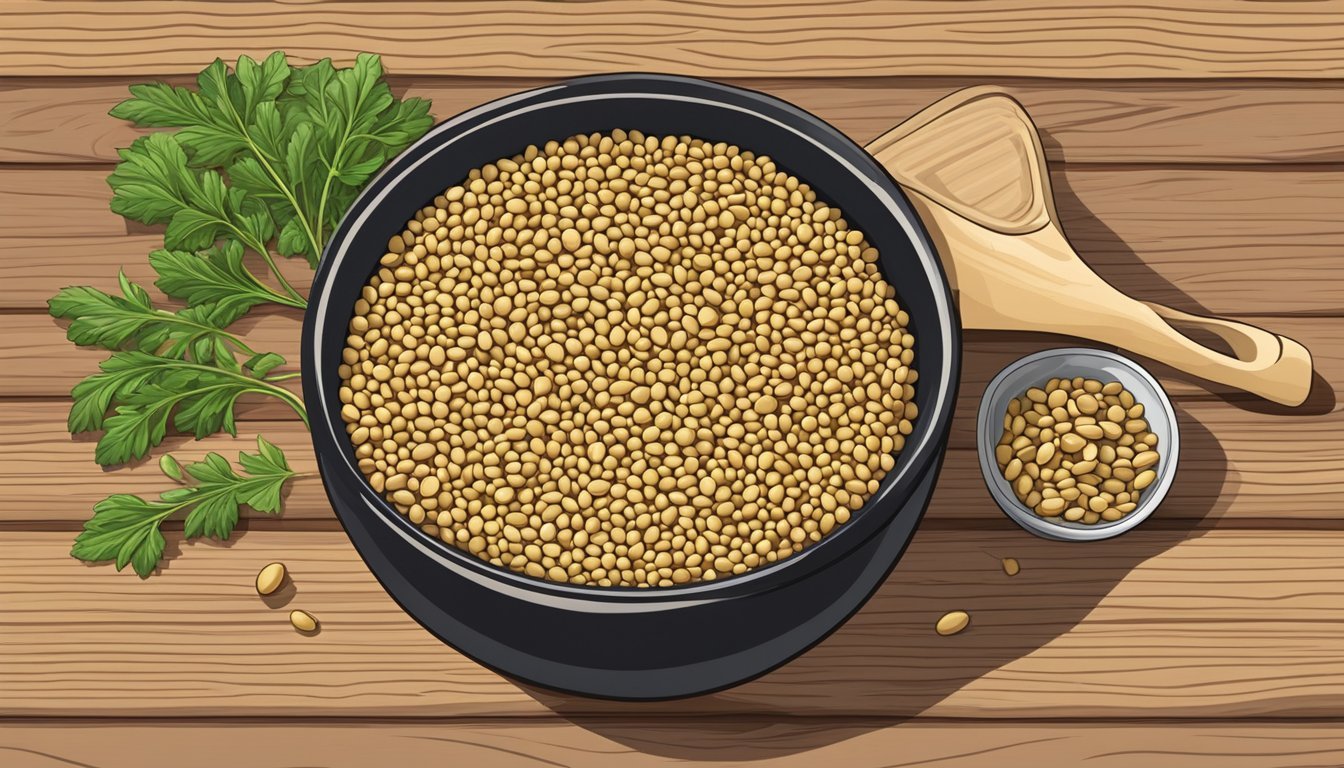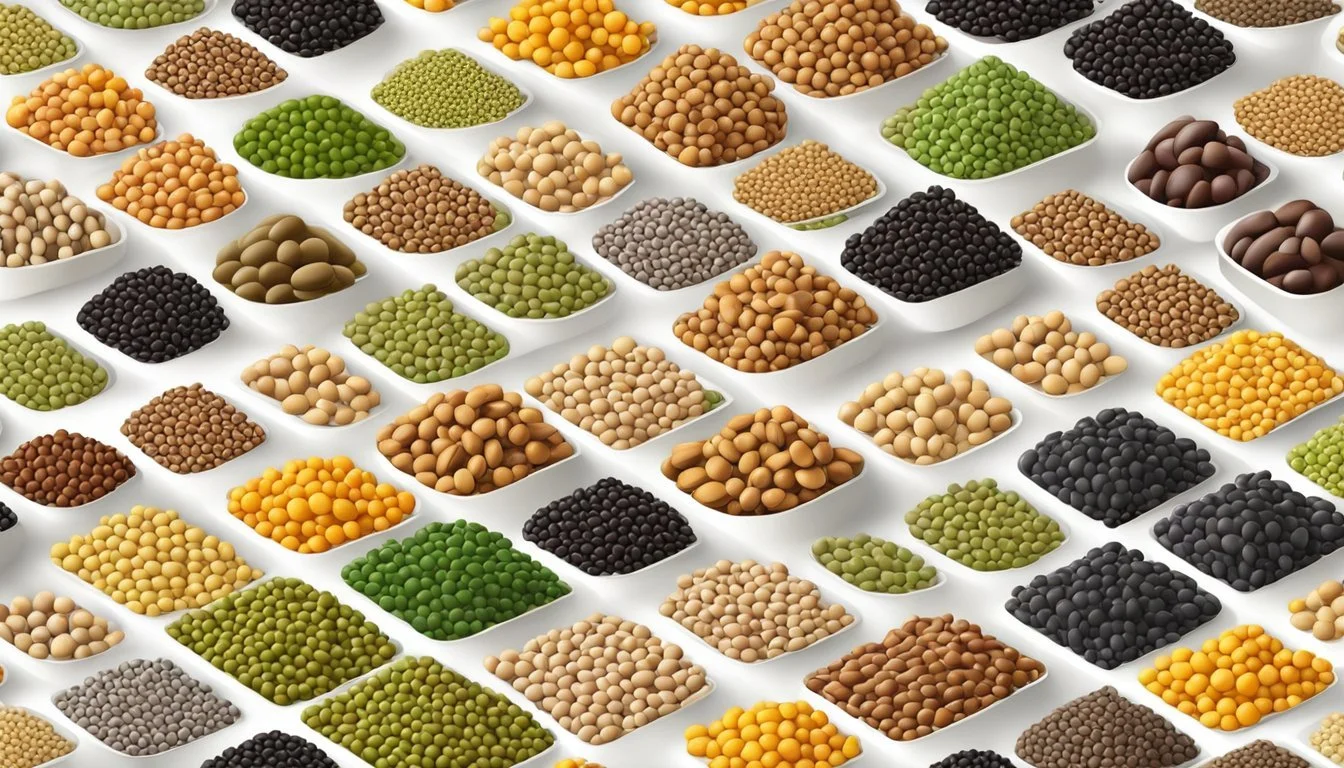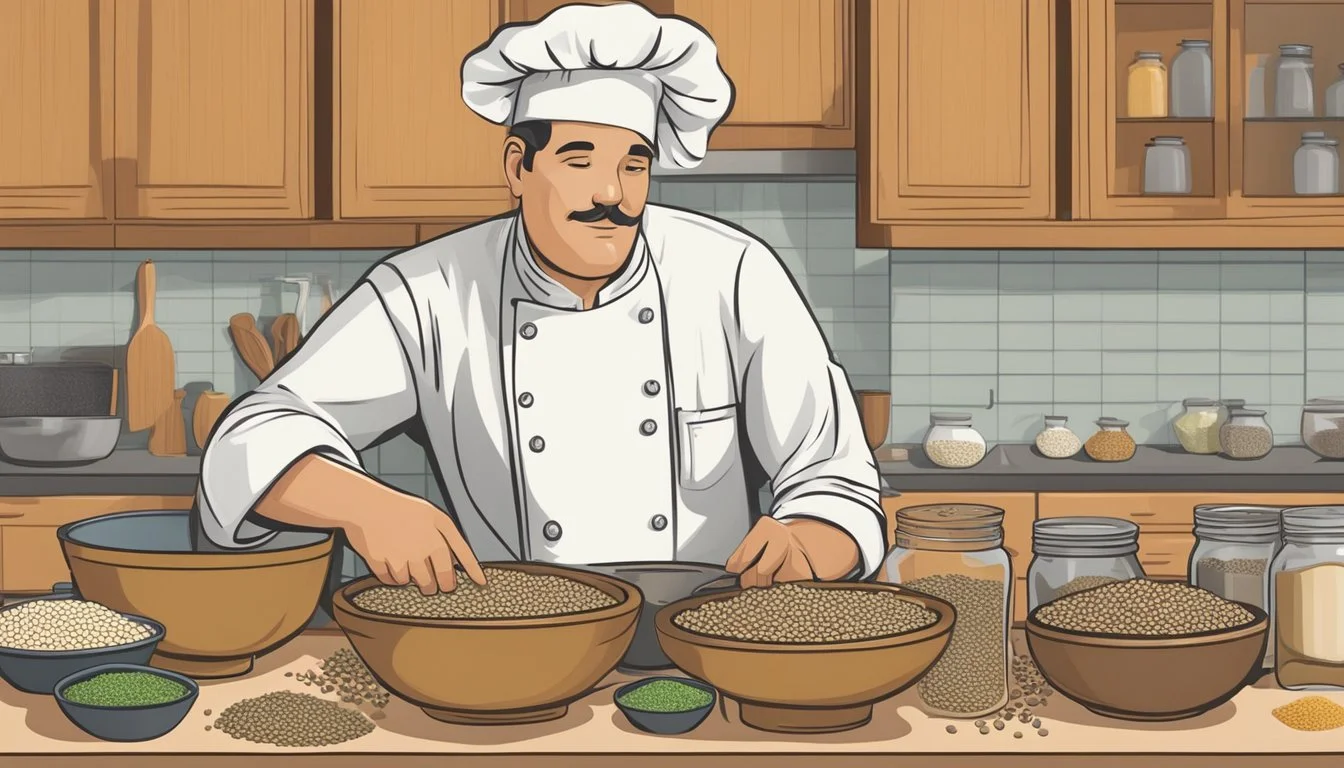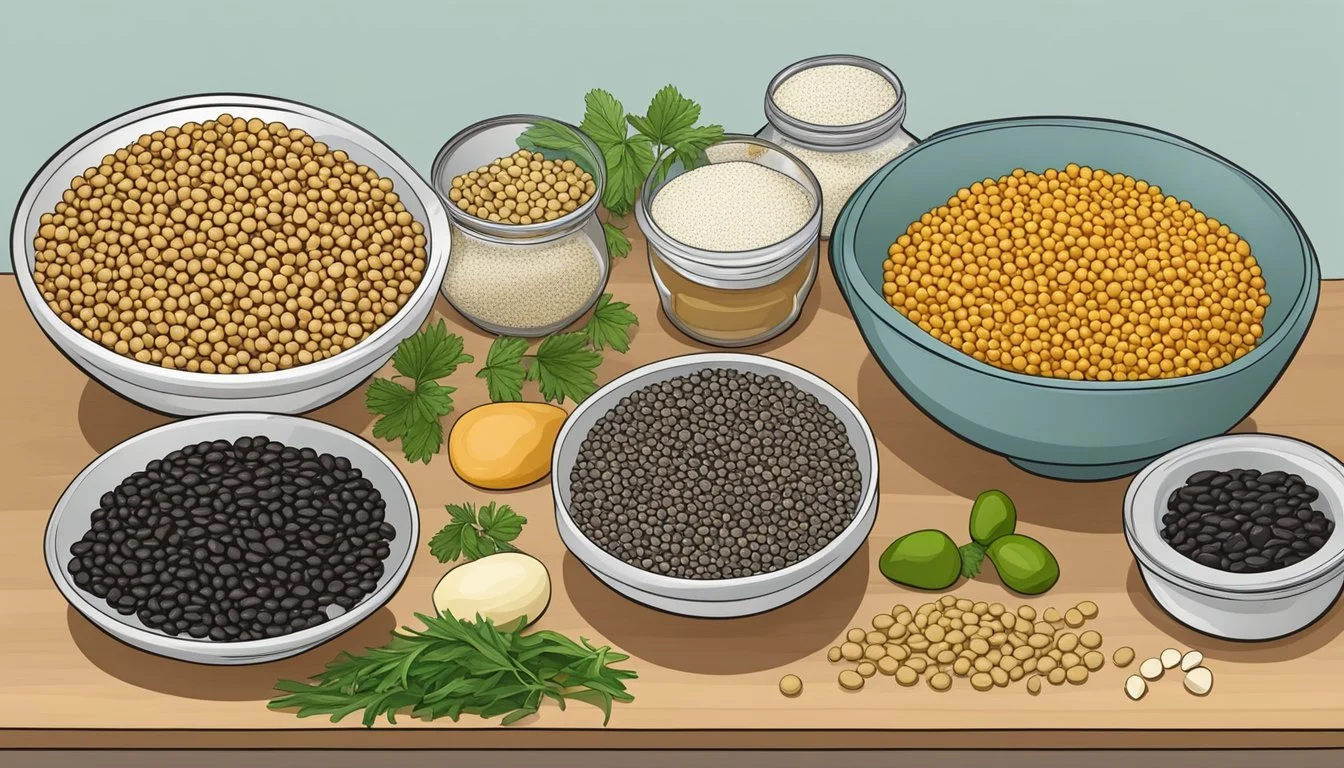Urad Dal Substitutes
Best Alternatives for Cooking
For anyone venturing into the delightful world of Indian cuisine, urad dal is likely a staple ingredient they encounter. But what if this essential pulse is not available? There are multiple substitutes for urad dal that can be used without compromising on taste and texture. Knowing these alternatives ensures that your culinary journey remains uninterrupted.
Substitutes like mung beans, split yellow peas, and semolina offer unique flavors and textures that can perfectly replace urad dal in various dishes. For instance, mung beans share a similar look and taste, making them an excellent substitute. Split yellow peas offer a mild flavor and creamy texture, ideal for dishes like dal makhani.
Semolina, often used in making dosa and idli, provides a nutty flavor and high protein content. Using these substitutes allows you to continue enjoying your favorite Indian dishes even when urad dal is hard to find.
Understanding Urad Dal
Urad dal, also known as black gram, is a staple in Indian cuisine known for its high nutritional value and versatility in cooking. Typically used in dishes such as idli, dosa, and dal makhani, urad dal is praised for its protein-rich content and distinctive flavor.
Nutritional Profile
Urad dal is a rich source of protein, making it a valuable component of vegetarian and vegan diets.
In addition to protein, it contains high levels of fiber, which aids in digestion.
Iron, potassium, and magnesium are present in significant amounts, contributing to overall health.
The legume also offers various vitamins essential for maintaining bodily functions.
Per 100 grams, urad dal provides approximately 347 calories, 25 grams of protein, and 18 grams of fiber. This nutrient-dense profile makes it a critical ingredient in many nutritious meals.
Culinary Uses
In Indian cooking, urad dal is foundational in dishes such as idli, dosa, and dal makhani.
Its unique ability to ferment and rise makes it ideal for traditional south Indian batters used in dishes like idli and dosa.
Its creamy texture enhances the flavor of rich, spiced dals, notably in dal makhani.
Urad dal is also used in tempering (tadka) to add flavor and texture to various dishes. Its adaptability to different recipes makes it a cherished component in both day-to-day meals and festive dishes.
Preparation Methods
Preparation involves soaking and cooking to achieve the desired texture.
For the whole variety, it is typically soaked in lightly salted water for 4-5 hours. For split urad dal, 1-2 hours are sufficient.
Once soaked, urad dal can be boiled, sautéed, or pressure-cooked depending on the dish.
For idli and dosa batters, the soaked dal is ground to a fine paste and allowed to ferment. For dals, it is often pressure-cooked to enhance the creamy, soft texture.
Careful preparation is essential to retain its nutrients and achieve the intended flavor and texture in dishes.
Common Urad Dal Substitutes
When it comes to substituting urad dal, there are several legume options that can closely mimic its taste and texture. Key substitutes include mung beans, adzuki beans, and other legume varieties. Each offers unique benefits and can be used in a variety of dishes.
Mung Beans
Mung beans, also known as green gram, are among the most versatile substitutes for urad dal. These beans are valued for their high protein content and mild nutty flavor, making them suitable for various dishes such as dosa, idli, and soups.
Mung beans cook relatively quickly and have a similar creamy texture to urad dal. They are also easy to digest, providing a good source of fiber, vitamins, and minerals. Their adaptability in both sweet and savory dishes widens the scope for culinary experimentation.
Adzuki Beans
Adzuki beans, characterized by their small size and red color, offer a different taste profile but still serve as an effective substitute for urad dal. They are often used in sweet dishes and desserts, particularly in East Asian cuisines.
These beans are rich in nutrients, including protein, folate, and manganese. Their slightly sweet flavor can add a unique twist to traditional recipes like dal makhani and dosa. Adzuki beans need a bit longer soaking time compared to urad dal but are a nutritious replacement.
Other Legume Options
Several other legumes can also replace urad dal in recipes. Chickpeas (garbanzo beans) and red lentils (masoor dal) are popular choices. Chickpeas are densely packed with protein and fiber, making them excellent for dishes like hummus and soups.
Yellow pigeon peas (toor dal) and black beluga lentils are also viable substitutes. Yellow pigeon peas are commonly used in Indian cuisine and offer a mild flavor with a creamy texture. Black beluga lentils, on the other hand, hold their shape well and are ideal for salads and stews. Each of these options brings a distinct flavor and nutritional value to the table, providing cooks with a range of choices to best suit their dishes.
Specialized Substitutes for Urad Dal
When searching for substitutes for urad dal, it’s essential to consider dietary restrictions, flavor profiles, and nutritional value.
Gluten-Free Alternatives
Split Yellow Peas
Split yellow peas are a strong gluten-free substitute. Known also as toor dal, they offer a mild flavor and creamy texture similar to urad dal. They're high in protein and fiber, making them nutritious. Yellow split peas cook quickly and are suitable for dishes like dal and soups.
Masoor Dal
Masoor dal (red lentils) is another gluten-free option, boasting a slightly sweet flavor. They are versatile and cook faster than urad dal. Consider using masoor dal in lentil soups, stews, and curries where you require a soft texture.
Rice and Lentils Combination
Using a mix of rice and lentils can emulate the texture provided by urad dal in recipes like dosa batter. This combination maintains the dish's integrity without gluten and can be adjusted to match the desired consistency and flavor.
Nut and Seed Variants
Peanuts
In tempering, peanuts can be a good replacement. They introduce a distinct nutty flavor and crunch. While not a direct substitute, they add a unique profile and protein content to dishes like chutneys and sambars.
Cashews
Cashews provide a creamy texture when blended, making them suitable for thickening curries or as part of batter mixtures. They bring a mild flavor and are a source of healthy fats. Use cashew paste in dals or gravies for a rich taste.
Flour Substitutes
Semolina (Rava)
Semolina is coarsely ground durum wheat and can substitute urad dal in recipes like dosa or idli. It has a high protein content and a nutty flavor that enhances the taste of these dishes. Semolina works well in batters, especially in creating a crisp texture.
Urad Dal Flour
For those looking to replicate traditional recipes accurately, urad dal flour is an ideal substitute. It’s made from ground urad dal and maintains the same texture and taste. Use it in recipes where you need to preserve the authentic flavor and thickness.
Leftover Rice Paste
When you need a quick and convenient substitute, leftover rice paste can replace urad dal in batter preparations. This option is economical and practical, keeping the essential structure of the dish, especially in dosa or idli batters.
Incorporating Substitutes in Traditional Recipes
Finding the right substitute for urad dal without compromising traditional flavors and textures can be a challenge. This process involves choosing ingredients that enhance the dish while maintaining its authenticity.
Modifying Dosas and Idlis
Dosas and idlis are staples of South Indian cuisine. When replacing urad dal, semolina (rava) mixed with rice flour offers a clean substitute. The combination results in a similar texture to the original batter. Using mung beans can also provide a soft and creamy texture. They integrate well with rice to create a comparable consistency.
Peanuts or cashews are also useful when added to the tempering mix, adding a mild, nutty flavor that complements the batter.
Adapting Curries and Soups
Mung beans and split yellow peas can be effectively used in curries and soups. Both legumes infuse the dishes with a soft, creamy texture. Split yellow peas have a more earthy flavor and cook quicker than urad dal, cutting down on preparation time. They perform well in richly spiced dishes, absorbing flavors like turmeric, cumin, and coriander.
For soup recipes, these substitutes ensure the dish remains hearty and flavorful, retaining the essence of traditional cooking.
Creating Savory and Sweet Dishes
Legumes like mung beans and yellow split peas can enrich both savory and sweet creations. In savory dishes such as salads and stews, these alternatives provide high protein content and textural integrity. For sweet dishes like rice pudding (kheer), mung beans give a soft consistency that blends well with sugar, cardamom, and milk.
Using these substitutes in diverse recipes retains core flavors and textures essential to authentic Indian and Asian cuisine.
Additional Considerations for Urad Dal Substitutes
When choosing a substitute for urad dal, it's important to consider the impact on texture, flavor, nutritional content, and cooking methods. Understanding these elements can help ensure that your dishes maintain their intended quality and taste.
Effects on Texture and Flavor
Substitutes can significantly alter the texture and flavor of a dish. Split yellow peas, for instance, offer a creamy texture similar to urad dal. Masoor dal provides a slightly sweet flavor that might change the taste profile of dishes like dal makhani or idli.
Using semolina instead of urad dal in recipes such as upma or dosa results in a nutty flavor and firmer texture. It's crucial to choose substitutes that complement the other ingredients in your recipes.
Nutritional Comparisons
Nutrient content varies across substitutes, which can impact the overall dietary value of your meal. Split yellow peas and toor dal are high in protein and fiber, similar to urad dal, but they also provide essential vitamins and minerals.
Masoor dal is another nutritious choice with high protein content. When replacing urad dal with any alternative, keep in mind the nutritional needs of your diet or the dietary requirements of those for whom you are cooking.
Cooking Techniques and Adjustments
Different substitutes may require specific cooking techniques and adjustments. Split yellow peas and toor dal need soaking times similar to urad dal for optimal texture. However, they often cook faster, needing adjustments in boiling or pressure-cooking times.
Semolina, on the other hand, may not need soaking and might be better suited for stir-fries and quick-cooking dishes. For dishes like dosa or idli, a rice and lentil combination or leftover rice paste may be used to replicate the consistency of urad dal batter.
Recognizing these differences ensures that substitutes not only mimic urad dal's role in recipes but also enhance the final dish.





